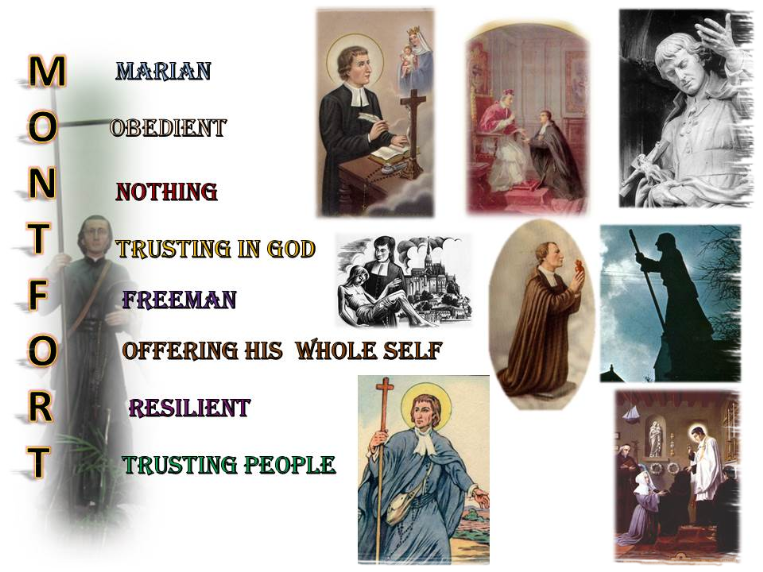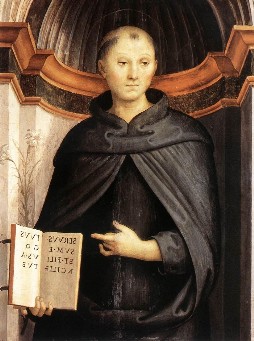Our Patron Saints - Santa Teresita Parish
Main menu:
Our Patron Saints
ST. THERESE OF THE CHILD JESUS
BRIEF BIOGRAPHY
St. Therese of the Child Jesus and the Holy Face, better known as "The Little Flower," St. Therese of Lisieux, was born in Alencon, France in 1873. She was the youngest child of Louis and Zelie Martin, who were themselves declared "Venerable" by Pope John Paul II in 1994. All five of the Martin children who reached adulthood became nuns; four of them became Discalced Carmelites.
Therese was drawn to God from a very young age. At the age of 15, she received special permission from her bishop to enter the Carmel of Lisieux. There, Therese lived a life of humility, simplicity, and childlike trust in God. By word and example, she shared this "little way of spiritual childhood" with the novices in her community.
On the night between Holy Thursday and Good Friday in 1896, Therese experienced her first hemoptysis (spitting up of blood) from tuberculosis. Over the next 18 months, her condition steadily deteriorated. In the months prior to her death, she prayed for the grace to "spend my heaven doing good on earth" and promised that after her death she would send "a shower of roses" from heaven. Offering her sufferings for the salvation of souls, Therese died of tuberculosis on September 30, 1897, at the age of 24.
Upon her death, the nuns received permission to distribute Therese's autobiography, comprised of material that she had written at the command of her superiors and the request of one of her sisters in the monastery. Published on the first anniversary of her death as "The Story of a Soul," the initial printing of 2,000 copies quickly sold out. In the following years, hundreds of thousands of copies of her autobiography were printed, and it was translated into many languages.
As people read about this unknown nun and sought her intercession, letters started pouring into the Carmel reporting favors received through her prayers. By the time she was beatified on April 29, 1923, the Carmel was receiving 800 to 1,000 letters daily.
St. Therese was solemnly canonized by Pope Pius XI on May 17, 1925. On December 14, 1927, Pope Pius XI proclaimed St. Therese Principal Patroness, equal to St. Francis Xavier, of all missionaries, men and women, and of the missions in the whole world. On May 3, 1944, Pope Pius XII named St. Therese Secondary Patroness of France, equal to St. Joan of Arc.
Most recently, Pope John Paul II named St. Therese a Doctor of the Church on October 19, 1997, World Mission Sunday. "Doctor of the Church" is a title given to a select few saints "on account of the great advantage the whole Church has derived from their doctrine". She became only the third woman in the Church to be so honored, joining St. Catherine of Siena and St. Teresa of Jesus, foundress of the Discalced Carmelites.
In her life and her writings, St. Therese anticipated the teachings of the Second Vatican Council by showing that the path of holiness is open to all. She understood that what matters in the Christian life is not great deeds, but great love, and that anyone can achieve the heights of holiness by doing even the smallest things well for love of God. "All is well," she wrote, "when one seeks only the will of Jesus."
St. Louis Marie de Montfort

Brief Biography
Missionary in Brittany and Vendee; born at Montfort, 31 January, 1673; died at Saint Laurent sur Sevre, 28 April, 1716.
From his childhood, he was indefatigably devoted to prayer before the Blessed Sacrament, and, when from his twelfth year he was sent as a day pupil to the Jesuit college at Rennes, he never failed to visit the church before and after class. He joined a society of young men who during holidays ministered to the poor and to the incurables in the hospitals, and read for them edifying books during their meals. At the age of nineteen, he went on foot to Paris to follow the course in theology, gave away on the journey all his money to the poor, exchanged clothing with them, and made a vow to subsist thenceforth only on alms. He was ordained priest at the age of twenty-
The following two instances will illustrate his success. He once gave a mission for the soldiers of the garrison at La Rochelle, and moved by his words, the men wept, and cried aloud for the forgiveness of their sins. In the procession which terminated this mission, an officer walked at the head, barefooted and carrying a banner, and the soldiers, also barefooted, followed, carrying in one hand a crucifix, in the other a rosary, and singing hymns.
Grignion's extraordinary influence was especially apparent in the matter of the calvary at Pontchateau. When he announced his determination of building a monumental calvary on a neighbouring hill, the idea was enthusiastically received by the inhabitants. For fifteen months between two and four hundred peasants worked daily without recompense, and the task had just been completed, when the king commanded that the whole should be demolished, and the land restored to its former condition. The Jansenists had convinced the Governor of Brittany that a fortress capable of affording aid to persons in revolt was being erected, and for several months five hundred peasants, watched by a company of soldiers, were compelled to carry out the work of destruction. Father de Montfort was not disturbed on receiving this humiliating news, exclaiming only: "Blessed be God!"
This was by no means the only trial to which Grignion was subjected. It often happened that the Jansenists, irritated by his success, secure by their intrigues his banishment form the district, in which he was giving a mission. At La Rochelle some wretches put poison into his cup of broth, and, despite the antidote which he swallowed, his health was always impaired. On another occasion, some malefactors hid in a narrow street with the intention of assassinating him, but he had a presentiment of danger and escaped by going by another street. A year before his death, Father de Montfort founded two congregations -
San Nicolas de Tolentino

Brief Biography
Born in 1245 in Sant'Angelo, St. Nicholas of Tolentino took his name from St. Nicholas of Myra, at whose shrine his parents prayed to have a child. Nicholas became a monk at 18, and seven years later, he was ordained a priest. He gained a reputation as a preacher and a confessor. C. 1274, he was sent to Tolentino, near his birthplace. The town suffered from civil strife between the Guelphs, who supported the pope, and Ghibellines, who supported the Holy Roman Emperor, in their struggle for control of Italy. Nicholas was primarily a pastor to his flock. He ministered to the poor and the criminal. He is said to have cured the sick with bread over which he had prayed to Mary, the mother of God. He gained a reputation as a wonder-